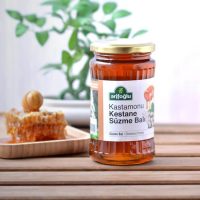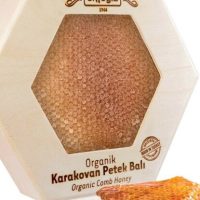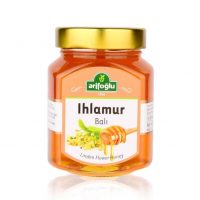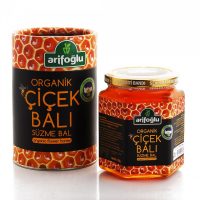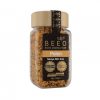Beeo – Pollen, 5.29oz – 150g
$31.49
Pollen are the reproductive cells found in the heads of the reproductive organs of plants. Pollen is used by bees in the feeding of juveniles and the feeding of young worker bees that secrete royal jelly. Pollen, which is important as a protein source in the feeding of bees, is a valuable nutrient because of its oils, carbohydrates, fibers, minerals, amino acids, polyphenols, phenolic and flavonoid compounds and vitamins. It is a very rich substance in structure and it contains vitamins (Niacin (B3), Pyridoxine (B6), Thiamine (B1), Riboflavin (B2), Pantothenic acid (B5), Folic acid, Biotin (protein). H)), Tocopherol (E), Ascorbic acid (C), Beta carotene mineral substances (Potassium (K), Calcium (Ca), Magnesium (Mg), Zinc (Zn), Iron (Fe), Copper (Cu) There are many biological activities such as manganese (Mn), Phosphorus (P), phenolic and flavonoids, polyphenols, amino acids, fatty acids and organic acids.
Although honey comes to mind at first when we say bee; In fact, the contribution of bees to both the environment and humanity is much more extensive. Perhaps the contribution of bees to pollination, which holds together the balance of plants and even living things in the whole world, is indisputable. Honey bees are carriers that are actively involved in the reproduction of plants. While bees take pollen and nectar from the plant to meet their own needs, they also contribute to the pollination of the plant’s flowers. While bees get honey nectar from flowering plants, pollen powders adhere to their bodies and fill the pollen baskets on their hind legs with the help of the legs of the bees. When the bees return to the hives, they leave these pollen in the honeycomb eyes. Pollen is the main protein source for bees to complete their growth and development and for the development of their glands. Apart from protein, it contains vitamins and minerals as well as nutrients such as fat, carbohydrate and fiber.
BEE’O Pollen 1.3 gr in 10 grams. Contains iron. This amount meets 9.3% of the daily iron vitamin need. Iron contributes to the normal formation of red blood cells and hemoglobin. It contributes to the normal function of the immune system and to the reduction of intensity and fatigue. Iron contributes to cell division and cognitive development of children.
This is an important source of nutrition services are provided to people with BEE’O brands in Turkey. BEE’O Pollen, which we will examine today, is offered for sale in 150 gr. Jars. Today, we will convey the nutritional values and detailed vitamin and mineral content of the product within the framework of the analysis report made by ITU ARI Teknokent. We also emphasize the importance of being first presented with the contents of the details of such an important foodstuff in Turkey.
BEE’O Pollen 0.35 gr in 10 grams. Contains zinc. This amount meets 4% of the daily Zinc requirement. Zinc is an important component that contributes to DNA and Protein synthesis. It also has a role in protecting bones, hair, nails and skin. It contributes to the normal function of the immune system.
Let’s talk about the nutritional values of the product; The product contains 246 kcal of energy per 100 gr. While 43.9% of this calorie comes from Carbohydrate, 38% comes from Protein. Such that; the product is 23.7 g in 100 g. It contains protein. We can explain the protein value of pollen as follows. 100 gr. The protein ratio of pollen is higher than peanuts, green lentils, single peas, beans and even turkey meat. This ratio is almost equivalent to ripe cheddar cheese and cooked doner meat. As such, we are talking about a very high protein source. Of course, this situation is a benefit and gift to us from the Anatolian geography, where bees collect the pollen.
Another noteworthy component is; is the ratio of fiber. So much so, 100 gr. Pollen 13 gr. It contains fiber. This fiber ratio means that if the pollen is consumed together, the carbohydrate or sugar taken in the body will mix into the blood for a longer time, stabilize blood sugar and prolong the fullness period.
Apart from these nutritional values, important vitamins and minerals are also included in the pollen content. Accordingly, 100 gr. pollen 1,8 gr. Vitamin B2, 15.7 mg. Vitamin B3, 2.8 mg. Vitamin B5 and 0.9 mg. Contains vitamin B6. Also 35 mg. Vitamin C and 1.4 mg. It contains vitamin E. Pollen also contains high levels of iron and phosphorus. Another point that draws our attention in the analysis data is the rate of calcium in the pollen. Such that; 100 gr. pollen 225 mg. It contains calcium – almost equivalent to 1 glass of milk. In this state, it is possible to enrich the meals by consuming pollen with calcium sources such as yoghurt and milk as well as many foods and by using it for breakfast. The answer to the question of what to eat is not in the industrial products on the market shelves; It is in real foods that come from the richness of Anatolian lands. We think this product is a good example of this.
Brand
Beeo
All the orders are shipped from Turkey via DHL. We are happy to work with a well-known shipping company.
We ship worldwide by DHL and we will inform your tracking number immediately after your order is shipped.
The preparation time is between one to four working days. The preparation time may be longer for hand made products. Those products are specifically produced for you and it is generally 7 days. If it is longer than 7 days, the details can be found in the description section of the product page.
There are two options for delivery. The first one is DHL Express and it is the faster option. Your order will be at your shipping address between 1 day to 7 days. Details are listed at the bottom. The second option is Normal shipping. Delivery time takes between 25 days to 30 days for Normal shipping. If you are not in a hurry you can always prefer this method.The shipping cost is calculated by the total price of your order. If your cart total is greater, the shipping cost will be lesser. You will earn free shipping when your order total is over 100$.
Estimated delivery times for DHL Express Shipping:
- UK: 1-3 days
- Europe: 1-3 days
- U.S.A and Canada: 2-4 days
- Middle East: 2-4 days
- South America: 2-5 days
- Rest of the World: 2-7 days
Estimated delivery times for Normal Shipping:
- All over the World: 25-30 days
For more information about our delivery service please check here.


